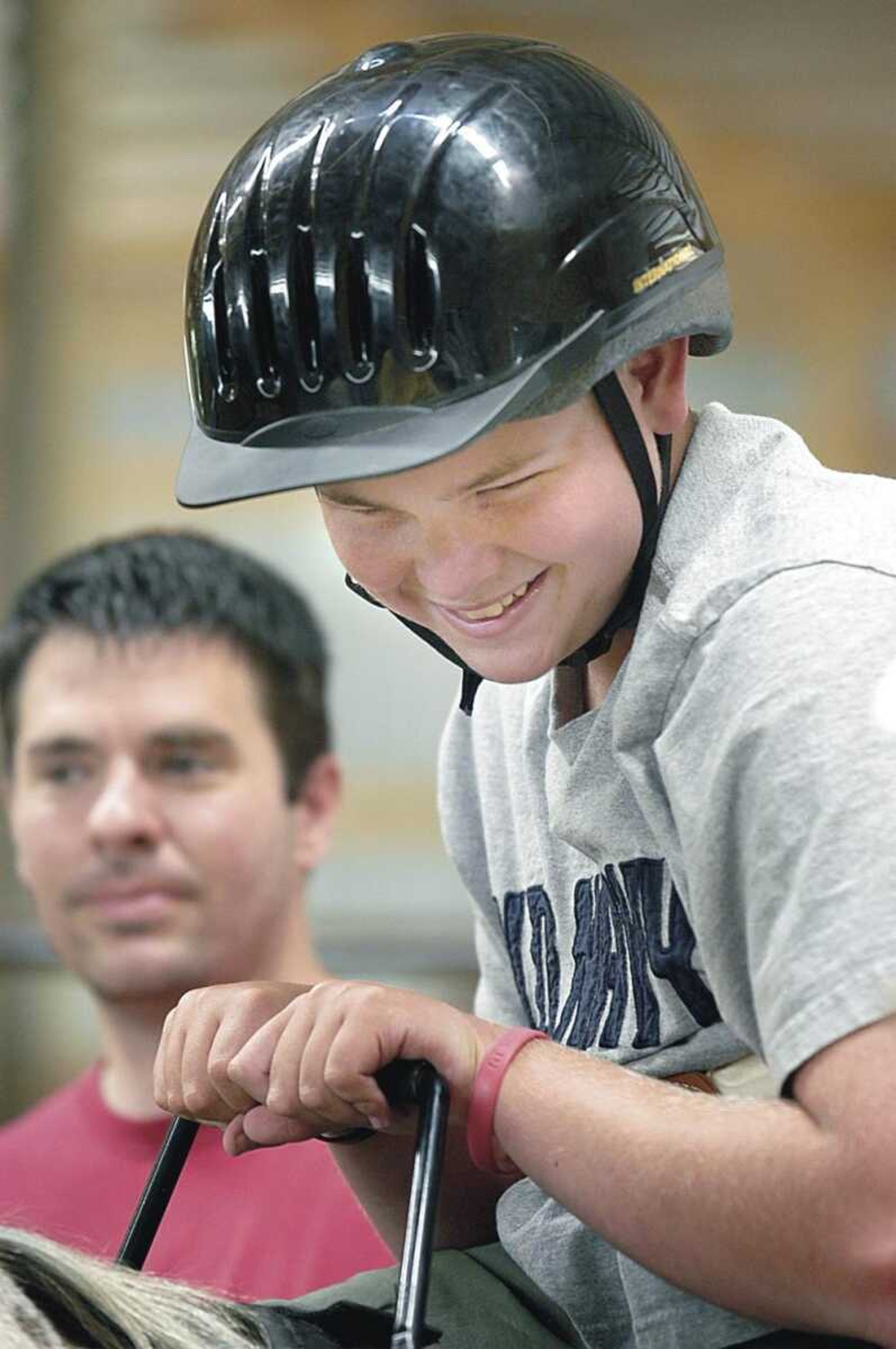Unexpected therapies
The instrument improves motor skills. Singing improves speech. And the sound itself reaches through the disease and touches the child within. As a music therapist with Judevine of Southeast Missouri, Kelley Pujol has seen the impact a song has on an autistic child firsthand...
~How music and animals benefit autistic children
The instrument improves motor skills.
Singing improves speech.
And the sound itself reaches through the disease and touches the child within.
As a music therapist with Judevine of Southeast Missouri, Kelley Pujol has seen the impact a song has on an autistic child firsthand.
"By using repetitive rhythmic information, we can calm a stressed system and cause the child to become more neurologically organized," says Pujol. "It helps the child process. Kids really like music; it motivates them and is fun."
One in a 150 births each year result in a child with autism, according to www.autism-society.org; it's one of the fastest growing developmental disabilities in the world.
While there is no known cure for autism, there are several treatments and educational approaches that may reduce some challenges associated with the condition. One of those is music therapy.
"Music therapy is much like any other therapy but it uses music to access its goals," says Pujol.
Children with autism have difficulty processing sensory information; music helps to organize the child's brain so that they may be able to process information easier. The sensory system is overloaded because the child has too much information floating around inside their head. Music therapy teaches the brain how to tune other things out so that they may focus on one thing at a time. Music calms down the child's system so that they can organize their brain and makes it simpler sort through all of the information they have stored there.
By using repetitive rhythmic information, we can calm a stressed system and cause the child to become more neurologically organized, explains Pujol. Once the child's neurological system is more organized, learning is more likely to take place.
OTHER THERAPIES
Another type of therapy that Judevine offers is auditory integration therapy. Some autistic children are sound-sensitive and certain frequencies bother them. In auditory integration therapy, the therapist uses recorded music to figure out what frequencies bother the child. They use recorded music, finding the base line to figure out what frequencies hurt the child. The system then adjusts the music to the child's ear and alters it so that the child may process it and get used to the different frequencies.
Horse therapy is another treatment used to help children with autism to adjust to social situations. Horses are prone to the emotions of others so by using the animals in therapy, it teaches the children how to control their emotions.
Because horses scare easily and need a leader, the therapy teaches children how to be calm and take charge of their lives. A companionship develops and this teaches the children how to participate in a nurturing relationship with other children and adults.
Connect with the Southeast Missourian Newsroom:
For corrections to this story or other insights for the editor, click here. To submit a letter to the editor, click here. To learn about the Southeast Missourian’s AI Policy, click here.









